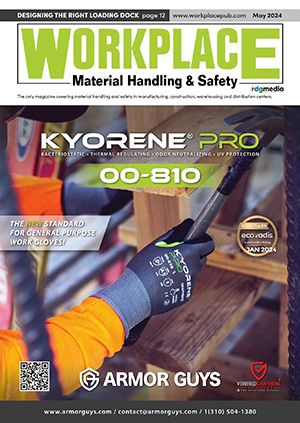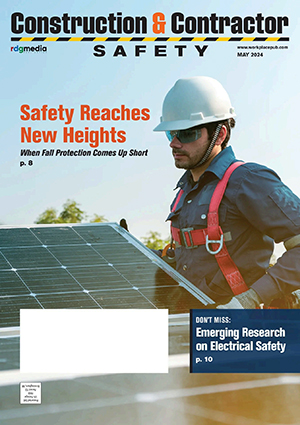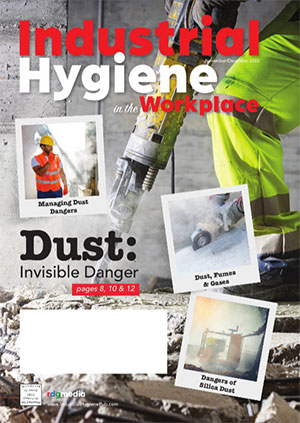NFPA 70E – Standard for Electrical Safety in The Workplace
“OSHA requires protective measures to prevent worksite injuries. DuraLabel recommends adding arc flash labeling to your overall safety and visual communication program. Arc flash labeling does not eliminate the requirement for work permits, training and planning when working on energized equipment. Effective hazard communication improves personnel safety, plant productivity and efficiency.” DuraLabel 1-888-326-9244 (U.S./Canada), www.duralabel.com
NFPA 70E, which was originally developed at OSHA’s request, is considered the definitive standard for electrical safety in the workplace. It includes information about arc flash incident energy, lockout-tagout procedures and personal protective equipment (PPE) that can mitigate the risk of an electrical injury.
NFPA 70E specifies requirements for safe work practices to protect personnel by reducing exposure to major electrical hazards. It is intended to help companies comply with OSHA 1910 Subpart S and OSHA 1926 Subpart K.
The 2018 update to the standard included an arc flash assessment tool that helps users determine safe work practices, an arc flash boundary and the appropriate PPE – if an arc flash hazard exists.
Current Edition: 2024
Why NFPA 70E?
Working with electricity can be dangerous. Engineers, electricians, and other professionals work with electricity directly, including working on overhead lines, cable harnesses and circuit assemblies. Others, such as office workers and sales people, work with electricity indirectly and may also be exposed to electrical hazards.
According to the Electrical Safety Foundation International[1] (ESFI), there were 126 electrical fatalities and 2,220 non-fatal electrical injuries involving days away from work in 2020. Construction and extraction; installation, maintenance and repair; building and grounds cleaning and transportation and material moving were the top occupations involving electrical fatalities. A third of electrical fatalities occurred in workers who were 25–34 years old; 21% involved those in the 34–44 age range; 18% in the 45-54 age range; 17% in workers aged 55–64 and 7% in workers between the ages of 20–24. The median number of days away from work for nonfatal electrical injuries in 2020 was three. Electrical shocks accounted for 1,610 of the non-fatal electrical injuries while burns accounted for 620.
The electrical hazards that contribute to the most electrical injuries and fatalities according to OSHA[2] include: when the path to ground is missing or discontinuous; lack of ground-fault protection; contact with power lines; equipment that is not used in the manner prescribed and improper use of extension and flexible cords.
Standard Requirements:
- Whenever possible, turn off electrical power during the work being done and verify that it stays off until the task is completed. This can be done by: individual qualified employee control; simple lockout/tagout or complex lockout/tagout.
- When it is necessary to work “live” near exposed energized parts, a live work permit that describes the work to be performed and why it must be performed should be signed by the customer, engineers or other person in charge.
- For shock protection, three shock hazard boundaries should be determined: limited approach, restricted and prohibited. These boundaries help identify who should be allowed (i.e., only qualified persons can enter the restricted approach boundary) and when workers must use voltage-rated rubber gloves and fiberglass tools.
- The flash protection boundary (FPB) must also be determined. Anyone working closer than 48 inches to live parts must wear PPE to protect against arc flash. This may include overalls, jackets and vests made of material that blocks heat energy and that has non-conducive hardware.
- The Hazard/Risk Category (HRC) must be determined, based on tables provided by the standard. Determining the HRC level helps electrical workers select the correct type of PPE to wear, based upon the task they are performing live.
- Workers must wear appropriate PPE whenever they are performing tasks within the FPB, whether or not they are actually touching the live equipment.
Electrical Safety Training
There are many trainings available for workers whose jobs require them to use or be in close proximity to equipment that can produce electrical hazards. For instance, OSHA[3] offers a manual/training program entitled, “Electrical Safety in the Workplace.” It is designed to provide comprehensive on-site training to high-risk workers. Participants who complete the course will be able to:
- Identify electrical hazards
- Understand safety-related work practices
- Work on, or near, live parts safely
- List the personal protective equipment necessary for tasks involving electrical hazards
NFPA 70E-2024 is available at: https://webstore.ansi.org WMHS
[1] www.esfi.org/workplace-safety/workplace-injury-fatality-statistics/




